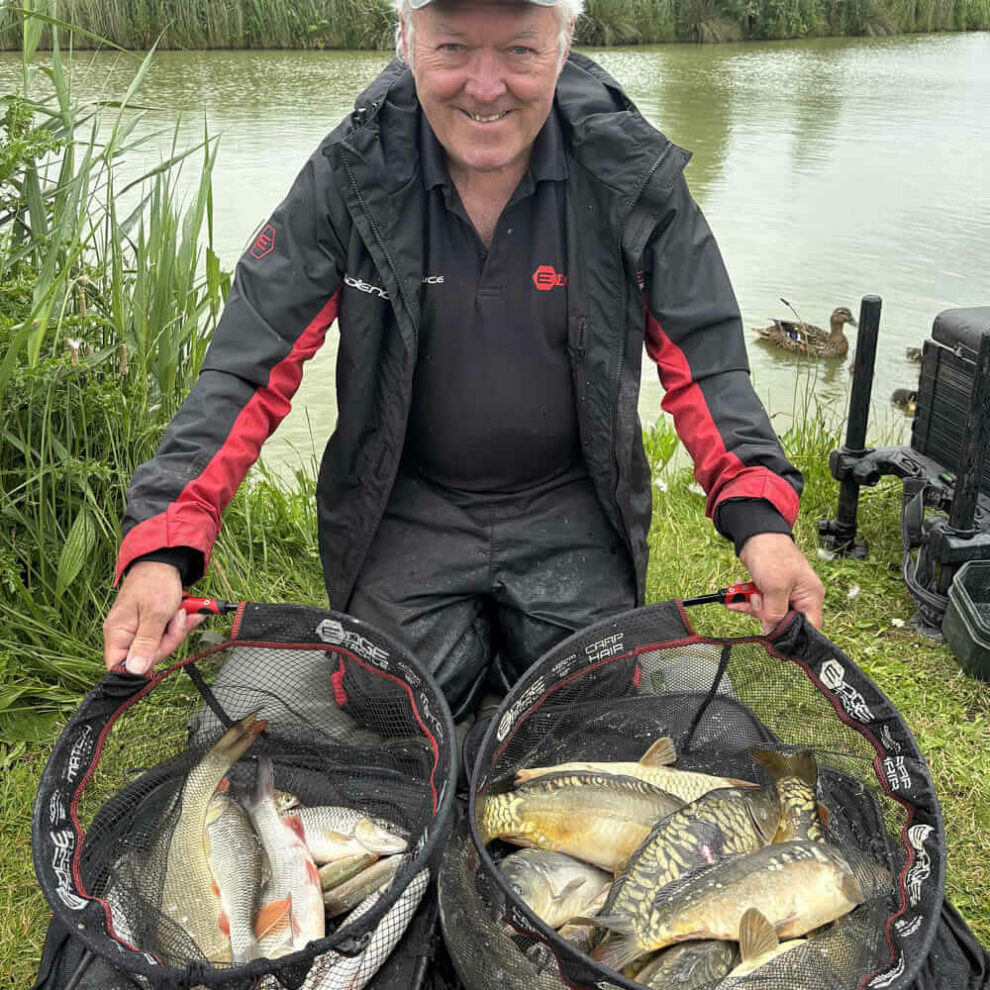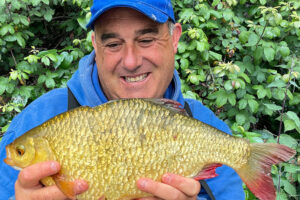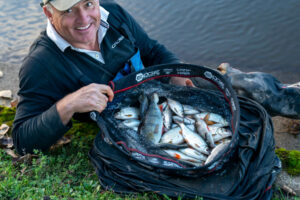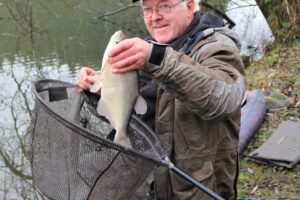Dave Coster takes a close look at some of the gear he uses to make his fishing run as smoothly as possible.
Raking It
When I moved to fenland, it quickly became evident a decent weed rake would be required because most of the drains and rivers get heavily choked up during the warmer months. Even when fishing beyond range of how far a device like this can be thrown, it makes sense clearing a decent channel closer in. This ensures anything big has fewer chances of getting snagged as it is played towards the landing net. Raking works particularly well when using pole or whip tackle, attracting fish almost instantly. On a recent trip to a local venue, the peg I choose had signs of having been cleared previously, but as you can see here, the green stuff quickly makes a comeback. After another good rake, small fish were soon topping, pulled in by all the disturbance. It wasn’t long after when my first tench of the new season was safely landed.

Spare Arms
I’m not into clamping loads of accessories to the legs of my seat box, preferring room to move freely, but I do make a few exceptions. This keepnet arm is brilliant and gets used most of the time. It’s particularly handy over hard ground, or in deeper swims, where it’s difficult to get a bank stick in. It has a clever quick release feature, which allows nets to be unhitched instantly for speedy weighing in. A device like this ensures a keepnet’s top ring can be set at the perfect height, so it acts as a useful rest for float rods, which is a useful bonus. The only times the longer arm doesn’t work is when I need to use a footplate. The latter pushes a keepnet out too far when it is attached to that, so I’ve invested in a shorter version as back up. A clamp on kit like this is better designed and finished these days, compared to earlier versions I tried out.
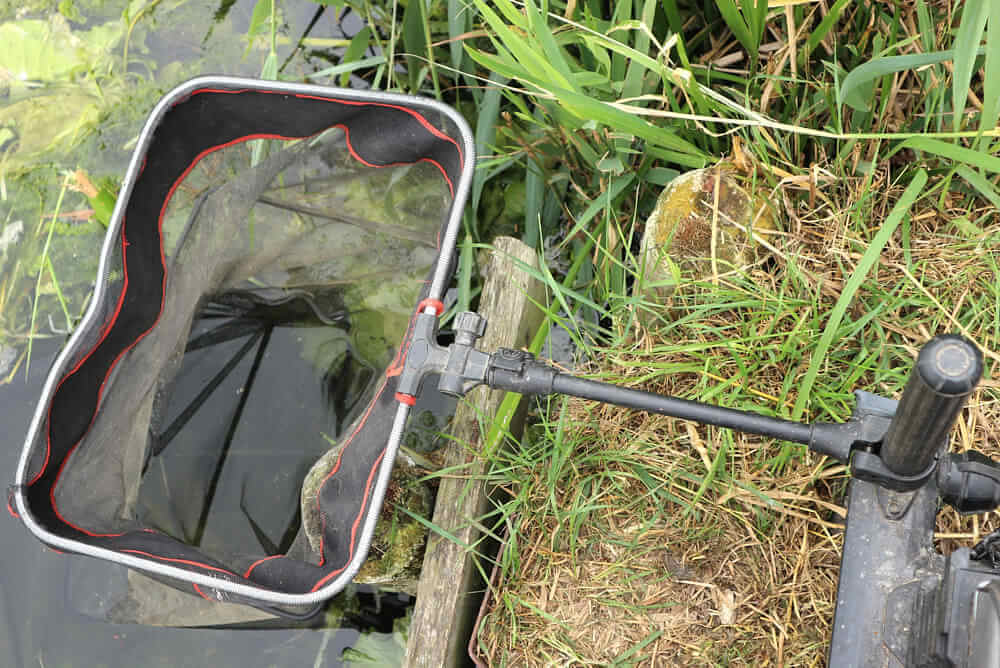
Net Gains
I always carry at least two landing nets with me, after a couple of sessions were cut short prematurely due to breakages. That hasn’t happened with the Edge products I use now. The sturdy frames feature double screw locking either side of their spreader blocks, making everything much stronger. Previous models were less secure in this area, leading to the arms working loose and eventually breaking. Despite not experiencing any more landing net issues, it’s reassuring to have a spare, just in case one gets damaged. I can also switch between two different designs. The 14in Match version with its bigger mesh comes into play when speed fishing for smaller silvers, while the 16in Carp Hair suits bigger samples with its finer material. Using two nets to show off my catches helps to segregate fish sizes or different species.
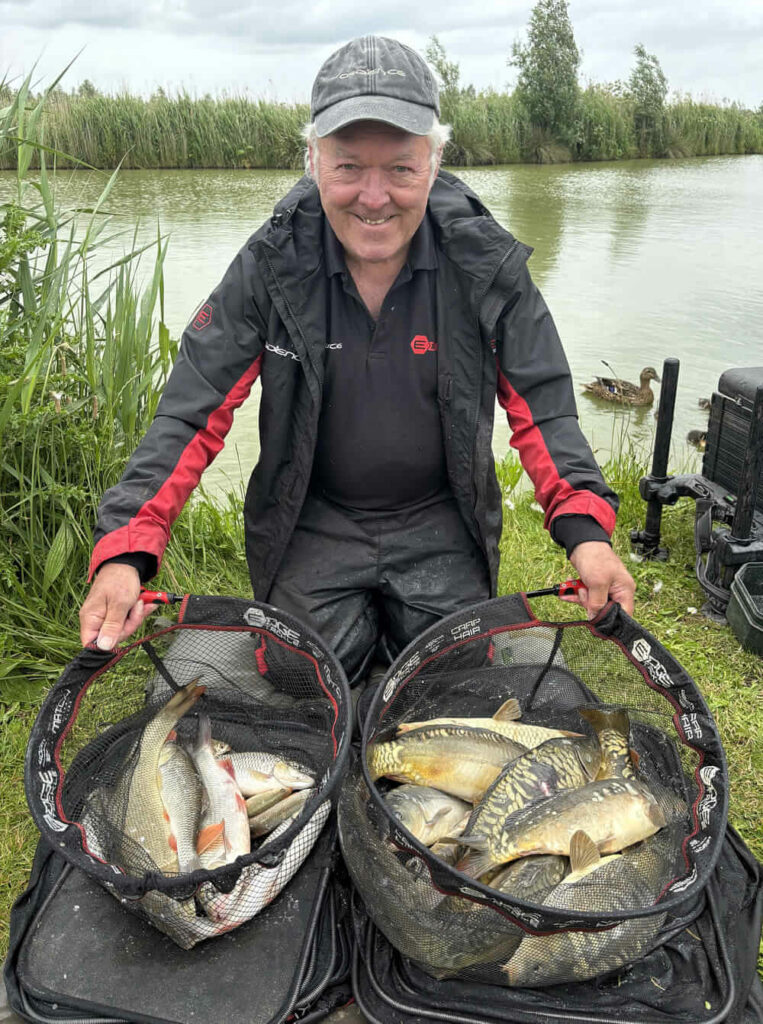
Third Hand
I occasionally break my rule regarding using multiple clamp on seat box accessories. This pole sock makes life so much easier when perched on steep banks, where unshipped pole sections often end up pointing towards the water, in constant danger of sliding in. Acting like a spare hand, it grips them perfectly at the leading end while unhooking, rebaiting, or making any tackle tweaks. This accessory is also superb in windy conditions, helping to anchor pole sections more securely while they are sitting on a roller. A slight change I made was cushioning the lower bend on its metal arm, taping over it near where the clamp part is. While the main part of the pole is secured normally in the upper pouch, the leading end of a spare butt section can now be more safely rested underneath, ready to come into play if any extra length is needed.
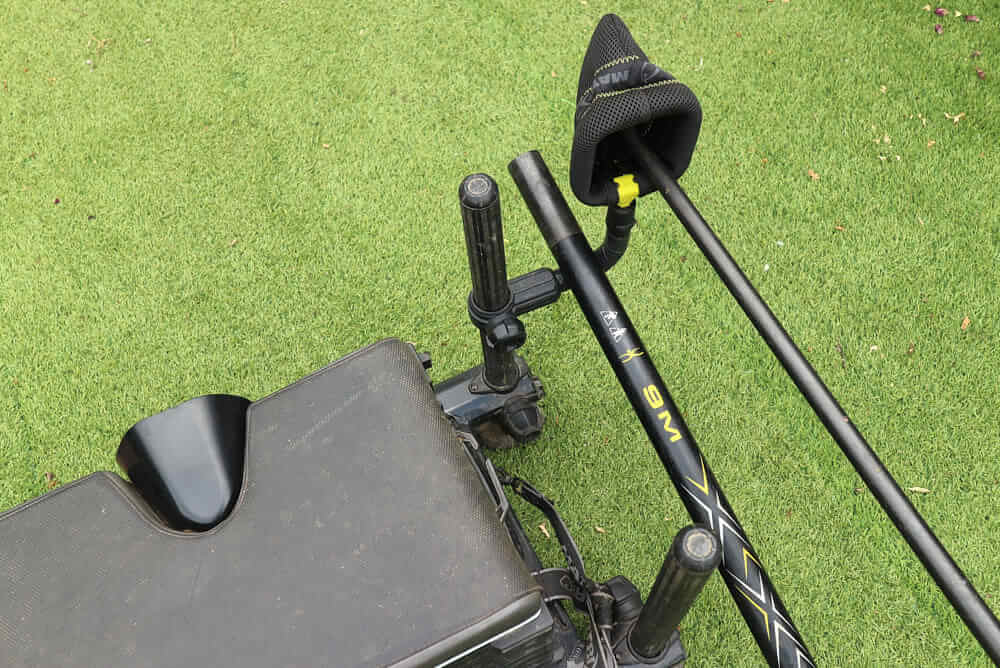
Tray or Table
My extending bait tray gets plenty of heavy usage, seen here after yet another busy session. I mainly employ it with a couple of extra legs fitted, so it evolves into a freestanding table. This allows me to position the work surface exactly where I want because sometimes having it clamped to my seat box puts everything too close. I’m forced to use it that way when sitting on cramped platforms, but when the bank offers more space, a bit of a gap can be created. This makes room for a landing net handle, also for the table to be set even more precisely, to suit what’s being used and where it needs to be positioned. The whole thing can be moved out of the way, handy if any changes are needed to my fishing station, such as adding a feeder arm. After fishing, in table form the entire package can be moved away, ready to be washed down.
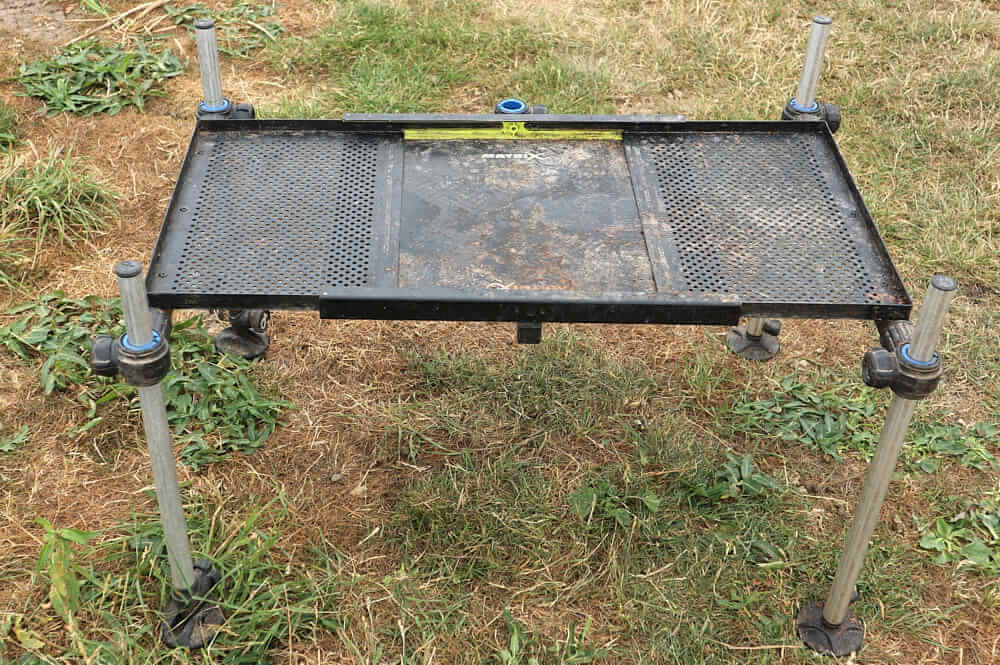
Kit Roost
I adapted this top kit roost to slot into the spare leg bracket on my bait tray. It looks a bit spartan compared to the mega ones I see many match anglers using these days. But up to six pole rigs normally cover all I need, along with the time I have to fit them all in. Cushioned grips like this are good for keeping everything close to hand, much better than laying expensive gear on the ground. Segregating spare pole tops and rods makes them less tangle prone, also a lot safer and easier to get at. I have a reserve roost that can be screwed into a bank stick or fitted to a spare tripod, should I need to employ more gear. That comes in handy when everything needs to be out in the water, setting up in the margins with a footplate or platform. Somewhat basic by many people’s standards, but I’m not into imitating tackle shop displays while out on the bank.
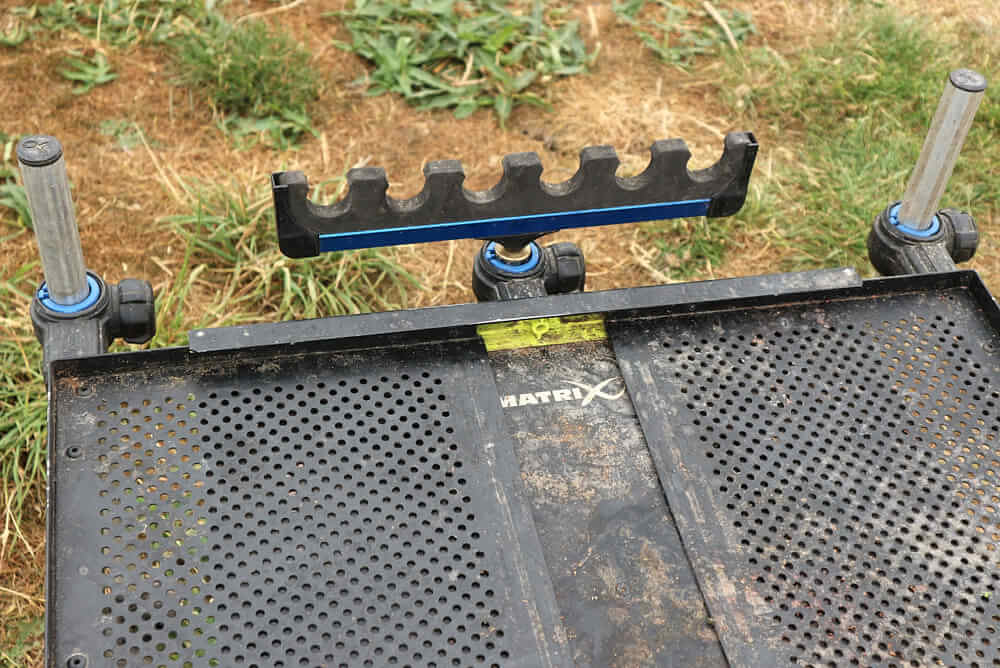
Safer Shelter
I experienced some difficult times with umbrellas until I arrived at this set up. I only rely on shelters if it’s extremely wet, or to keep cool when it is steaming hot. The main problem I had was with lower spiked pole sections bending too easily in windy conditions, especially if they were anchored to a brolly clamp. Most umbrellas make a major selling point of being as lightweight as possible, but this can make the business end of hollow alloy poles too flimsy and incapable of pushing into hard ground. I solved that with this solid aluminium Gardner brolly spike, which might be heavy, but it’s bulletproof. A big bonus is it features a threaded tip, which deals much better with tough terrain. The next issue was sorting out a decent clamp. Single ones kept breaking, while this double design has proved to be far better, providing a rock-solid anchor.
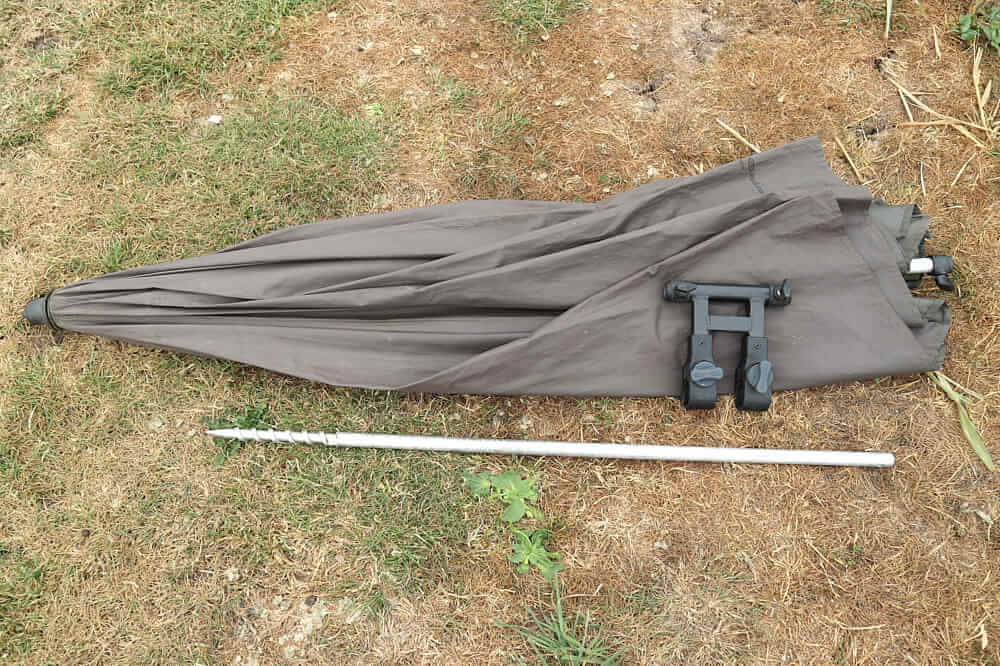
Pocket Sized
This mini spade was an unusual gift. It breaks down even smaller, storing away in a compact pouch that was supplied with it. Digging out the banks of drains and rivers is not allowed in my area, but I don’t want it for that. It’s mainly used for clearing liquid mud in well-trodden pegs, rather than getting all my gear covered in muck. It also comes in useful for shovelling up mole hill soil, to freshen up any worms that need to be stored a while longer. Another application has been using this tool like a mini machete, to hack through nettles and other undergrowth, to get to the water in overgrown pegs. It has a serrated edge on one side of the blade, and rather oddly, a bottle opener on the other. Something like this might only get used occasionally, but being light and tucking neatly away in a luggage pocket, it’s a handy thing to have in reserve.
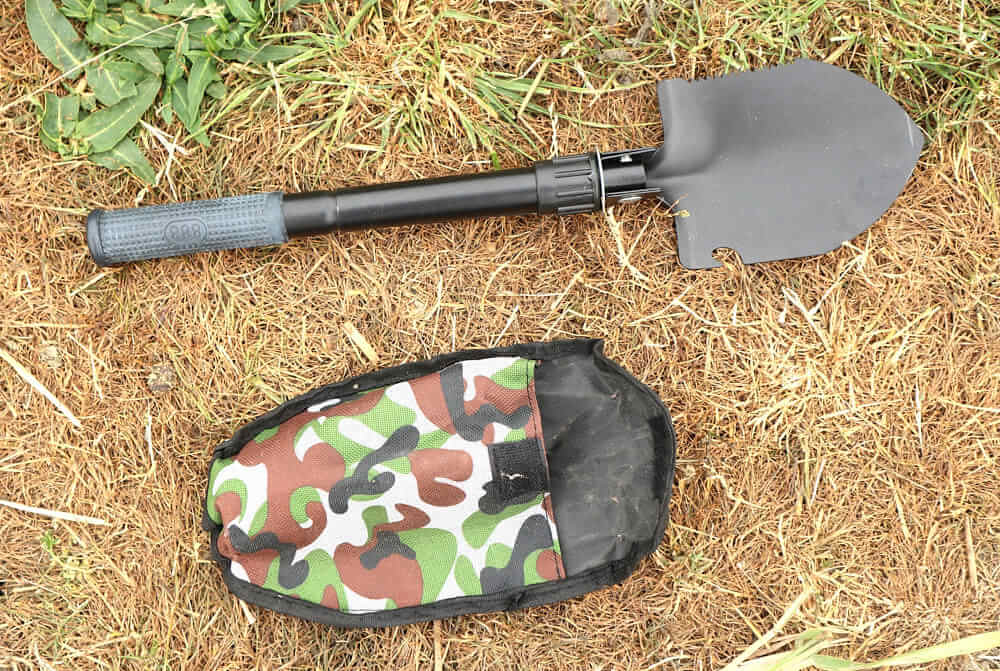
Fast Weighing
Several years back, I was working on a project for Normark/Rapala. Their product development manager sent me a box full of digital scales, asking me to test them and find out which set was best. There were no brand names on any of them. Some were complicated to operate and took ages to settle when fish were jumping about in a weigh net. This turned out to be the best design, which I’ve continued to use ever since. The scale goes up to 25kg, operating in ounces or kilograms. Trying items with known weights confirmed the accuracy factor was okay. Most importantly, this product worked speedily after being switched on. Zeroing in considered when a net was added, maintaining excellent accuracy for either individual fish or catches. Being much easier to use than all the others, it gave locked readings the quickest.
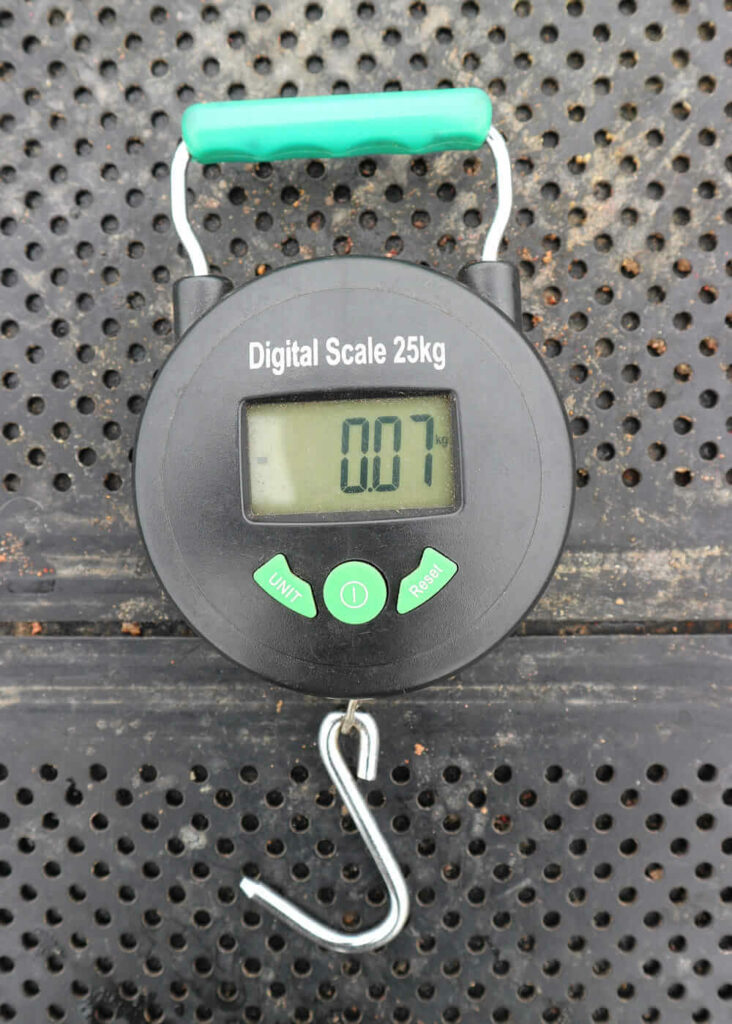
Catapult Solution
I carry a good number of catapults, providing a decent choice of elastic strengths and different pouch types, covering both lightweight and robust frames. They deal with everything from dinking in small amounts of loose feed to suit various pole lengths, to blasting bait as far as possible with waggler tackle. The only problem was how to store such awkward gear, after wasting time almost every session trying to extract what I needed from a tangled ball. I arrived at this simple solution in the end, wrapping Velcro locking neoprene rod bands around the handles of groups of three or four. These are then stored more neatly in a big outside pocket on the side of my cool bag. You will have noticed I mainly use small blue Preston pouches on pole catties with lighter elastics, switching to the bigger Drennan Revolution design with stronger latex.
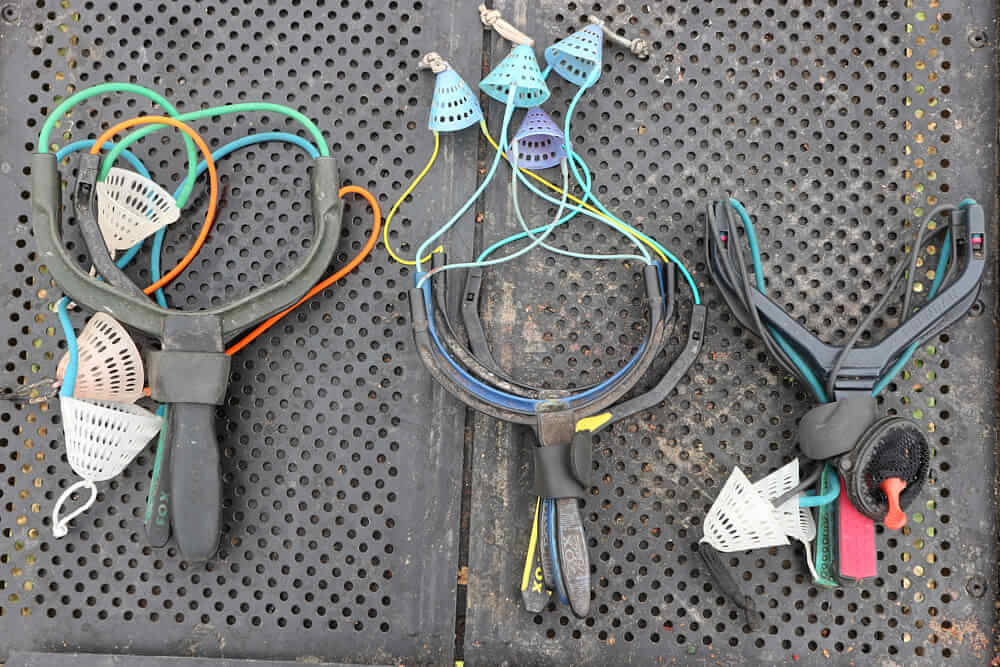
Work Zones
Side drawers on modern seat boxes can be configured to suit personal requirements, but it takes time to get everything right. I used to rely on just one leading compartment to house all the most heavily used tools and rig bits I require fast access to, but such an area quickly became over-cluttered. I now have a couple of storage sections like this, in the top two drawers of my seat box. The uppermost one is less crammed with disgorgers, scissors, plummets, shot pincers and a few rig bits, while the lower one seen here acts as back up. It contains spare disgorgers, a multi tool, Stotz pincers and removers, a black waterproof marker pen, knot picker, plus a few more rig bits like line stops. Storing essentials like this in compact spaces may look busy, but important items are easier to find in a hurry. Floats and winders are stashed away behind.
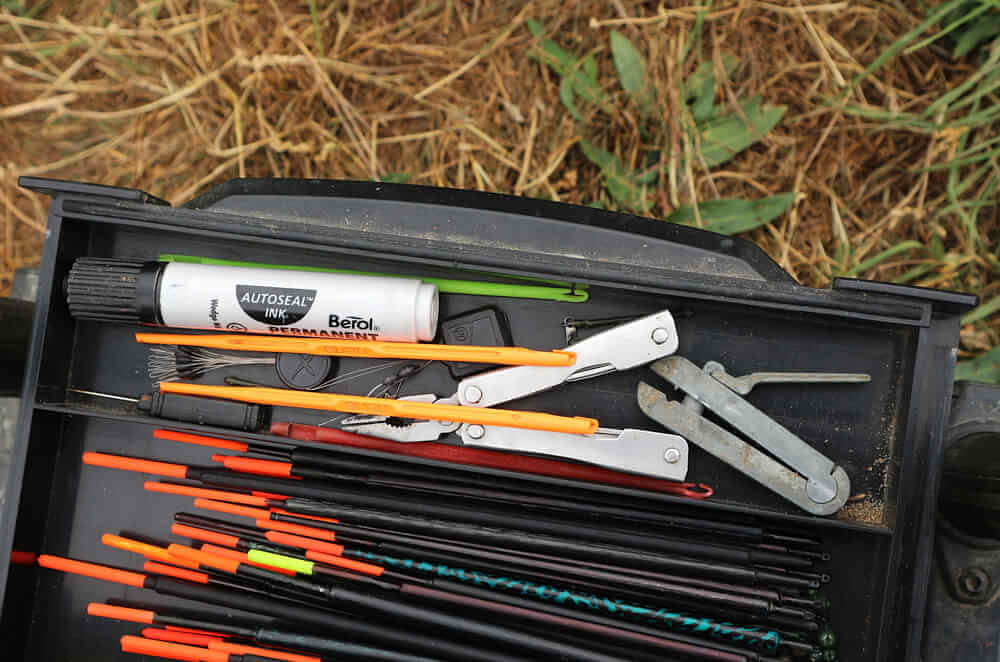
Load Shifter
I bought this four-wheel Preston Barrow several years ago, and it was money well spent. It transports major items like a seat box, carryall, cool bag and rod holdall, plus plenty of other gear. It’s easy to assemble and breaks down compactly to fit in my car. After somehow managing by lugging fishing trollies around for many decades, this new format has proved to be a revelation. It invites exploring much further afield, without ending up exhausted. There might be motorised versions now, but I like to think pushing big loads around helps keeps me fit. Until I can’t do that, I’m happy with this solution. No fear of punctures either due to solid tyres all round. I remember my first trolly with pneumatic wheels ending up with both flat after struggling miles on a big canal match. What a nightmare that was getting everything back.


